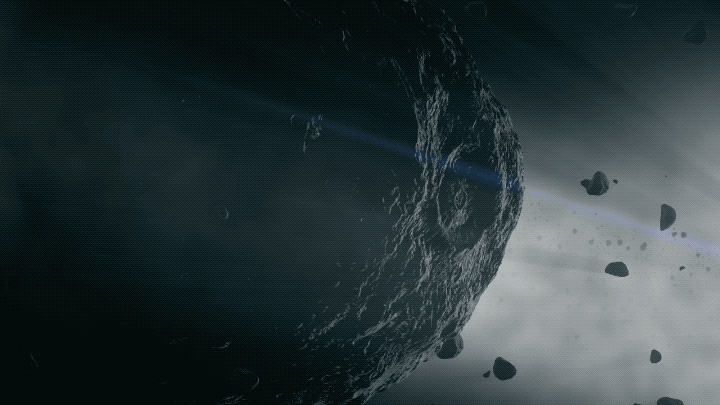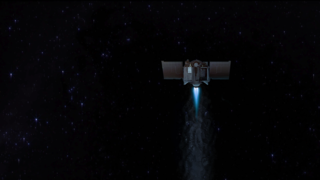15.12.2017

OSIRIS-REx cruising towards rendezvous with Asteroid Bennu
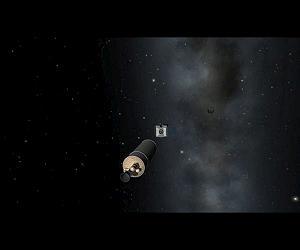
OSIRIS-REx is continuing outbound cruise operations, en route to arrival in August of 2018 at the asteroid Bennu. The spacecraft is currently 29.6 million miles (47.6 million kilometers) from Earth and is executing a program designed to study and reduce the presence of water on the spacecraft.
During routine in-flight testing of the spacecraft's thermal properties earlier this year, the mission's navigation team noticed an unexpected minor acceleration of the spacecraft when the Sample Return Capsule (SRC) was exposed to sunlight. The mission team determined that this small thrust was caused by the outgassing of water that had been adsorbed by the SRC's heat shield and backshell before launch.
Retention of water in blanketing and other materials - and the subsequent outgassing of this water - occurs with all spacecraft. For OSIRIS-REx, it was determined that when the SRC was exposed to the Sun at a distance of less than 1 Astronomical Unit (1 AU = approximately 93 million miles), this trapped water escaped and imparted a small thrust.
While this small thrust would not be a problem for other missions, the gravity at the target asteroid Bennu is low enough that even this small amount of thrust could make orbital operations more difficult for OSIRIS-REx.
To better understand the outgassing effects on the spacecraft's trajectory - and to bake out much of the remaining water before the spacecraft arrives at Bennu - the OSIRIS-REx mission team designed an outgassing program for execution starting earlier this fall.
The choice of timing took into account both the spacecraft's proximity to the Sun (less than 1 AU) and the fact that there were no science activities planned during this period. The outgassing program is being run concurrently with outbound cruise operations and does not affect the timing of the spacecraft's arrival at Bennu.
Starting in mid-October, the spacecraft has been placed into various attitudes to expose different parts of the SRC to direct sunlight and initiate outgassing. Priority is given to the portions of the SRC that will face the Sun during asteroid proximity operations. The mission team has been able to detect and measure the rate of outgassing at each attitude and has determined that water is being removed as expected.
The goal is to reduce the outgassing to the point where the spacecraft can fly the planned baseline trajectories around Bennu without modifications, and preliminary indications show that the program is progressing toward this goal. The program is scheduled to run through early January 2018.
Quelle: SD
---
Update: 23.12.2017
.
UH researcher named participating scientist for NASA asteroid mission
David Trang has been selected as a participating scientist on NASA‘s first asteroid sample return mission, the Origins, Spectral Interpretation, Resource Identification and Security-Regolith Explorer (OSIRIS-REx).
Trang is a postdoctoral associate at the Hawaiʻi Institute for Geophysics and Planetology in the School of Ocean and Earth Science and Technology at the University of Hawaiʻi at Mānoa.
As a participating scientist, Trang will become a science team member during his three-year tenure with the mission.
The goal of OSIRIS-Rex is to explore Bennu, an asteroid approximately 1,600 feet in diameter orbiting in the solar system. It will take samples of the asteroid and return them to Earth.
Trang’s role is to help with preliminary survey maps of Bennu, which has been physically and chemically altered by exposure to the space environment, which is known as “space weathering.”
“Being a part of this mission is very exciting because I get to help explore a planetary body within our solar system that we have never visited before,” said Trang.
“This is scientifically significant to me because I get to try to understand how space weathering affects asteroids, which is still quite an enigma. Also, this opportunity to be part of a NASA mission is significant for me personally, because it’s been an honor and a dream of mine since I was a kid.”
OSIRIS-REx launched on September 8, 2016, from Cape Canaveral, Florida. The return sample of a primitive asteroid could help scientists understand the formation of the solar system more than 4.5 billion years ago.
The spacecraft will arrive at Bennu in August 2018 and begin surveying the surface.

Artist’s concept of NASA’s OSIRIS-REx spacecraft. Credit: NASA‘s Goddard Space Flight Center/CIL.
Quelle: University of Hawaiʻi
---
Update: 3.01.2018
.
Look at this photo of earth captured from three million miles away
The OSIRIS-REx is travelling towards asteroid Bennu.

A Nasa spacecraft on its way to a rendezvous with an asteroid managed to capture a breathtaking image of the Earth and the moon from three million miles away.
The OSIRIS-REx spacecraft caught a unique view of our planet as it travelled towards asteroid Bennu, a huge carbon-rich rock that the US space agency believes might contain “organic materials or molecular precursors to life”.
The spacecraft is on “a mission to figure out where we came from, as asteroids are remnants from the formation of our solar system”, according to Nasa.
The agency added: “But while the spacecraft might tell us some things about where we have been and where we are headed, it also can remind us of where we are right now.”
The composite image was made from data captured by OSIRIS-REx’s MapCam instrument.
Three images, of different colour wavelengths, were combined and colour-corrected and the moon was brightened to make it more easily visible, Nasa said.
The OSIRIS-REx is expected to reach Bennu in August 2018.
Quelle: BT
---
Update: 19.01.2018
.
OSIRIS-REx on course for Bennu
Meanwhile, NASA’s $1 billion OSIRIS-REx mission is on the final leg of its two-year journey to asteroid Bennu, a miniature world about 1,600 feet (500 meters) across. Bennu is a rare kind of object — scientists know it as a “B-type” asteroid — and is likely loaded with lots of carbon, the backbone of organic molecules.
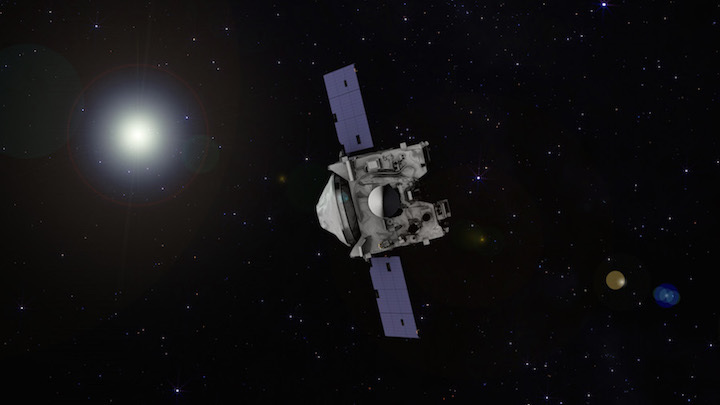
In August, the solar-powered voyager will begin its final approach to the asteroid, and eventually slip into orbit. After a thorough survey of Bennu with OSIRIS-REx’s spectrometers, cameras and laser altimeter, scientists will decide where to snag a sample.
Dante Lauretta, OSIRIS-REx’s principal investigator, said Wednesday that the mission is ready for prime time at Bennu.
“OSIRIS-REx has been in flight for about 16 months now,” he said at the semi-annual SBAG meeting held at NASA’s Ames Research Center in California. “We’ve had a very productive outbound cruise so far.”
The spacecraft got a gravitational boost from Earth in September, following a flyby trajectory similar to the one used by Hayabusa 2 in 2015.
Like asteroid Ryugu, Bennu spends most of its time outside of Earth’s orbit. But it crosses Earth’s orbital path twice on each 1.2-year circuit of the sun, making it a low-risk impact hazard.
Lauretta said OSIRIS-REx is healthy on the final months of its trip to Bennu, with engineers only monitoring a minor concern with outgassing coming from the craft’s sample return canister heat shield and backshell.
Ground controllers detected a small amount of unexpected thrust coming from the sample carrier last year, and engineers determined the force was caused by outgassing of water absorbed by the sample return capsule during launch preparations in Florida. Water retention is common on spacecraft being prepared for launch, officials said.
“While this small thrust would not be a problem for other missions, the gravity at the target asteroid Bennu is low enough that even this small amount of thrust could make orbital operations more difficult for OSIRIS-REx,” mission officials wrote in a status update.
Controllers have steered the spacecraft to point the sample return capsule toward the sun multiple times since October, using solar heating to bake out the water. Lauretta said the outgassing has diminished as predicted.
“We fully expect that we’ll be able to dry out these components, and this should not be an issue when we get to the asteroid,” Lauretta said. “But this is something that we’re paying attention to very closely, and continuing to try to mitigate this unexpected event.”
Built by Lockheed Martin, OSIRIS-REx is short for the Origins, Spectral Interpretation, Resource Identification, and Security – Regolith Explorer. Its objective is to snag at least 2.1 ounces — 60 grams — of surface material, and return the specimens to Earth in September 2023.
OSIRIS-REx’s approach phase officially begins Aug. 17, Lauretta said, at a range of about 1.2 million miles (2 million kilometers) from Bennu.
Detailed images of Bennu should be acquired by OSIRIS-REx in October. Analysts will look for evidence of debris or moons in the asteroid’s vicinity before OSIRIS-REx’s arrival.
All but one of OSIRIS-REx’s instruments were tested when the spacecraft flew by Earth in September, verifying the sensors were ready for Bennu. A laser altimeter instrument provided by the Canadian Space Agency will be activated after the probe gets to the asteroid.
“We are now about seven months away from optical acquisition of Bennu,” Lauretta said. “We expect that to occur on Aug. 17, 2018, kicking off about a three-month-long approach phase, and then getting us into the preliminary survey in late November and early December of 2018. That will be the first real resolved imaging of the asteroid.”
The asteroid has a surface area of about 200 acres — 0.78 square kilometers — and some of OSIRIS-REx’s instruments will capture data with centimeter-scale resolution, or better. The observations will add context to the sample OSIRIS-REx will return to Earth, and identify resources that might be valuable for astronauts in the future.
During the next phase of the mission, in late 2019, mission scientists will narrow down targets for OSIRIS-REx to go down and snatch up a piece of Bennu. A final decision by top NASA management will pick the sampling site based on several factors, primarily to avoid damaging the spacecraft and to maximize the likelihood of capturing primitive, pre-biotic material, the mission’s scientific payoff.
The all-important sampling attempt is scheduled for July 2020, when OSIRIS-REx will extend a robot arm to touch Bennu.
OSIRIS-REx will depart Bennu some time between March 2021 and April 2022 — managers have some flexibility — and drop the capsule containing the precious asteroid samples for a blazing-hot re-entry over the Western United States on Sept. 24, 2023.
Specialists at a military training ground in Utah will stand by to retrieve the samples.
But first OSIRIS-REx, like Hayabusa 2, has to home on its destination.
“It’s going to be a very exciting year for us,” Lauretta said. “The team is very excited and very ready for Bennu, and to begin the science campaign for this mission.”
Quelle: SN
---
Update: 9.07.2018
.
Successful Second Deep Space Maneuver for OSIRIS-REx Confirmed
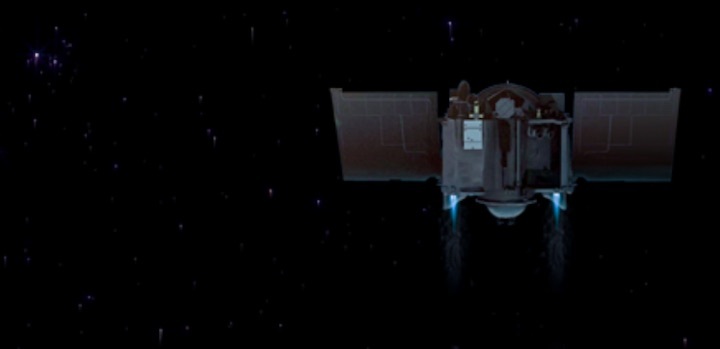
New tracking data confirms that NASA’s OSIRIS-REx spacecraft successfully completed its second Deep Space Maneuver (DSM-2) on June 28. The thruster burn put the spacecraft on course for a series of asteroid approach maneuvers to be executed this fall that will culminate with the spacecraft’s scheduled arrival at asteroid Bennu on Dec. 3.
The DSM-2 burn, which employed the spacecraft’s Trajectory Correction Maneuver (TCM) thruster set, resulted in a 37 miles per hour (16.7 meters per second) change in the vehicle’s velocity and consumed 28.2 pounds (12.8 kilograms) of fuel.
Tracking data from the Deep Space Network provided preliminary confirmation of the burn’s execution, and the subsequent downlink of telemetry from the spacecraft shows that all subsystems performed as expected.
DSM-2 was OSIRIS-REx’s last deep space maneuver of its outbound cruise to Bennu. The next engine burn, Asteroid Approach Maneuver 1 (AAM-1), is scheduled for early October. AAM-1 is a major braking maneuver designed to slow the spacecraft’s speed from approximately 1,130 to 320 miles per hour (506.2 to 144.4 meters per second) relative to Bennu and is the first of four asteroid approach maneuvers scheduled for this fall.
NASA’s Goddard Space Flight Center in Greenbelt, Maryland, provides overall mission management, systems engineering and the safety and mission assurance for OSIRIS-REx. Dante Lauretta of the University of Arizona, Tucson, is the principal investigator, and the University of Arizona also leads the science team and the mission’s observation planning and processing. Lockheed Martin Space in Denver built the spacecraft and is providing spacecraft flight operations. Goddard and KinetX Aerospace are responsible for navigating the OSIRIS-REx spacecraft. OSIRIS-REx is the third mission in NASA’s New Frontiers Program. NASA’s Marshall Space Flight Center in Huntsville, Alabama, manages the agency’s New Frontiers Program for its Science Mission Directorate in Washington.
Original Maneuver Update: June 28, 2018
OSIRIS-REx Executes Second Deep Space Maneuver
NASA’s OSIRIS-REx spacecraft executed its second Deep Space Maneuver today, which put the spacecraft on course for its scheduled arrival at the asteroid Bennu in December. The mission team will continue to examine telemetry and tracking data as they become available and will have more information on the results of the maneuver over the next week.
Quelle: NASA
---
Update: 16.07.2018
.
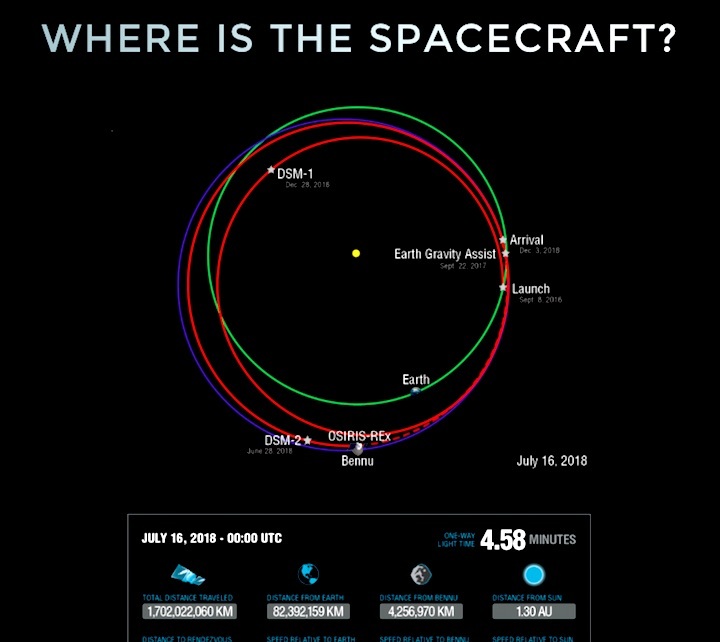
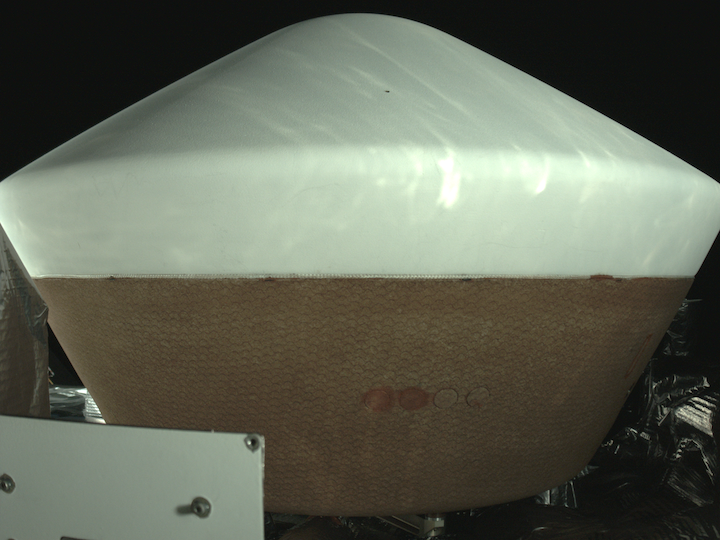
Sample Return Capsule Imaged During Six-Month Checkout
This image of the OSIRIS-REx Sample Return Capsule (SRC) was taken on March 2, 2017, by the spacecraft’s StowCam imager as part of a visual checkout of the SRC conducted six months after launch.
A small, dark spot is visible on the surface of the SRC that was not present during the checkout images taken after launch in 2016. Subsequent analysis has shown that this spot is an indentation approximately 0.08 inches (2 mm) across – the size of a poppy seed – that may have been caused by a particle hitting the SRC during flight. The SRC is the capsule on the spacecraft that will securely stow the sample of asteroid Bennu once it is collected, and it will ultimately detach from the spacecraft and land under parachutes in the Utah desert in 2023. The indentation visible in the image is located on the SRC’s ablative heat shield, which was designed to withstand being hit by particles and the high-speed entry into the Earth’s atmosphere. After further investigation, it was determined that the indentation will not affect the SRC’s performance.
StowCam, a color imager, is one of three cameras comprising TAGCAMS (the Touch-and-Go Camera System), which is part of OSIRIS-REx’s guidance, navigation, and control system. TAGCAMS was designed, built and tested by Malin Space Science Systems; Lockheed Martin integrated TAGCAMS to the OSIRIS-REx spacecraft and operates TAGCAMS.
Quelle: NASA
---
Update: 25.08.2018
.
OSIRIS-REx is NASA’s first mission to visit a near-Earth asteroid, survey the surface, collect a sample and deliver it safely back to Earth. The spacecraft has traveled approximately 1.1 billion miles (1.8 billion km) since its Sept. 8, 2016, launch and is scheduled to arrive at Bennu on Dec. 3.
“Now that OSIRIS-REx is close enough to observe Bennu, the mission team will spend the next few months learning as much as possible about Bennu’s size, shape, surface features, and surroundings before the spacecraft arrives at the asteroid,” said Dante Lauretta, OSIRIS-REx principal investigator at the University of Arizona, Tucson. “After spending so long planning for this moment, I can’t wait to see what Bennu reveals to us.”
As OSIRIS-REx approaches the asteroid, the spacecraft will use its science instruments to gather information about Bennu and prepare for arrival. The spacecraft’s science payload comprises the OCAMS camera suite (PolyCam, MapCam, and SamCam), the OTES thermal spectrometer, the OVIRS visible and infrared spectrometer, the OLA laser altimeter, and the REXIS x-ray spectrometer.
During the mission’s approach phase, OSIRIS-REx will:
- regularly observe the area around the asteroid to search for dust plumes and natural satellites, and study Bennu’s light and spectral properties;
- execute a series of four asteroid approach maneuvers, beginning on Oct. 1, slowing the spacecraft to match Bennu's orbit around the Sun;
- jettison the protective cover of the spacecraft’s sampling arm in mid-October and subsequently extend and image the arm for the first time in flight; and
- use OCAMS to reveal the asteroid’s overall shape in late-October and begin detecting Bennu’s surface features in mid-November.
After arrival at Bennu, the spacecraft will spend the first month performing flybys of Bennu’s north pole, equator and south pole, at distances ranging between 11.8 and 4.4 miles (19 and 7 km) from the asteroid. These maneuvers will allow for the first direct measurement of Bennu’s mass as well as close-up observations of the surface. These trajectories will also provide the mission's navigation team with experience navigating near the asteroid.
“Bennu’s low gravity provides a unique challenge for the mission," said Rich Burns, OSIRIS-REx project manager at NASA’s Goddard Space Flight Center in Greenbelt, Maryland. "At roughly 0.3 miles [500 meters] in diameter, Bennu will be the smallest object that any spacecraft has ever orbited.”
The spacecraft will extensively survey the asteroid before the mission team identifies two possible sample sites. Close examination of these sites will allow the team to pick one for sample collection, scheduled for early July 2020. After sample collection, the spacecraft will head back toward Earth before ejecting the Sample Return Capsule for landing in the Utah desert in Sept. 2023.
NASA’s Goddard Space Flight Center provides overall mission management, systems engineering and the safety and mission assurance for OSIRIS-REx. Dante Lauretta of the University of Arizona, Tucson, is the principal investigator, and the University of Arizona also leads the science team and the mission’s science observation planning and data processing. Lockheed Martin Space in Denver built the spacecraft and is providing flight operations. Goddard and KinetX Aerospace are responsible for navigating the OSIRIS-REx spacecraft. OSIRIS-REx is the third mission in NASA’s New Frontiers Program. NASA’s Marshall Space Flight Center in Huntsville, Alabama, manages the agency’s New Frontiers Program for its Science Mission Directorate in Washington.
NASA spacecraft captures first image of near-Earth asteroid Bennu
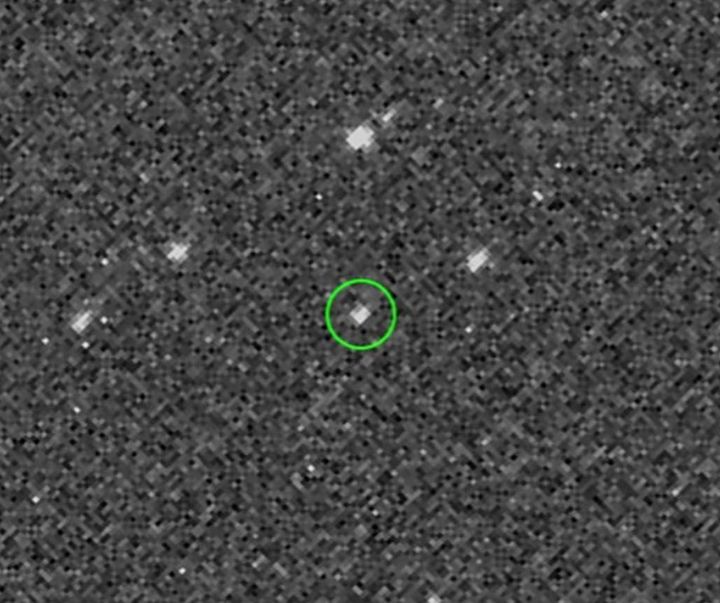
Last week, after almost a two-year trip, a NASA spacecraft captured its first look at the near-Earth asteroid Bennu from 1.4 million miles away. The image was released for the first time Friday.
The details: The asteroid sampling spacecraft, which has traveled 1.1 billion miles since launch, marks the agency's inaugural visit to a near-Earth asteroid. The goal is to "survey the surface, collect a sample and deliver it safely back to Earth," according to a NASA press release.





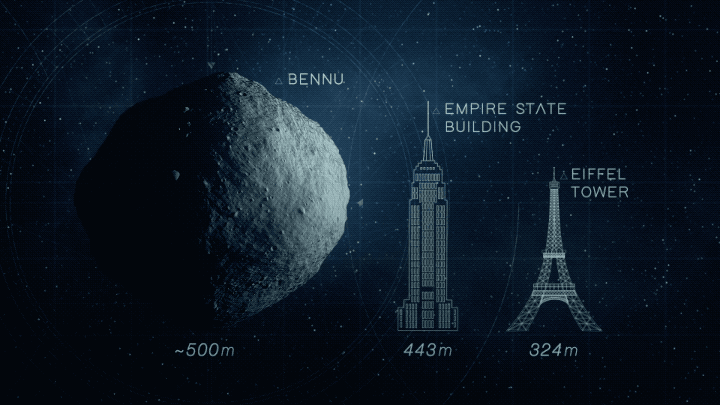 Credit: NASA's Goddard Space Flight Center
Credit: NASA's Goddard Space Flight Center